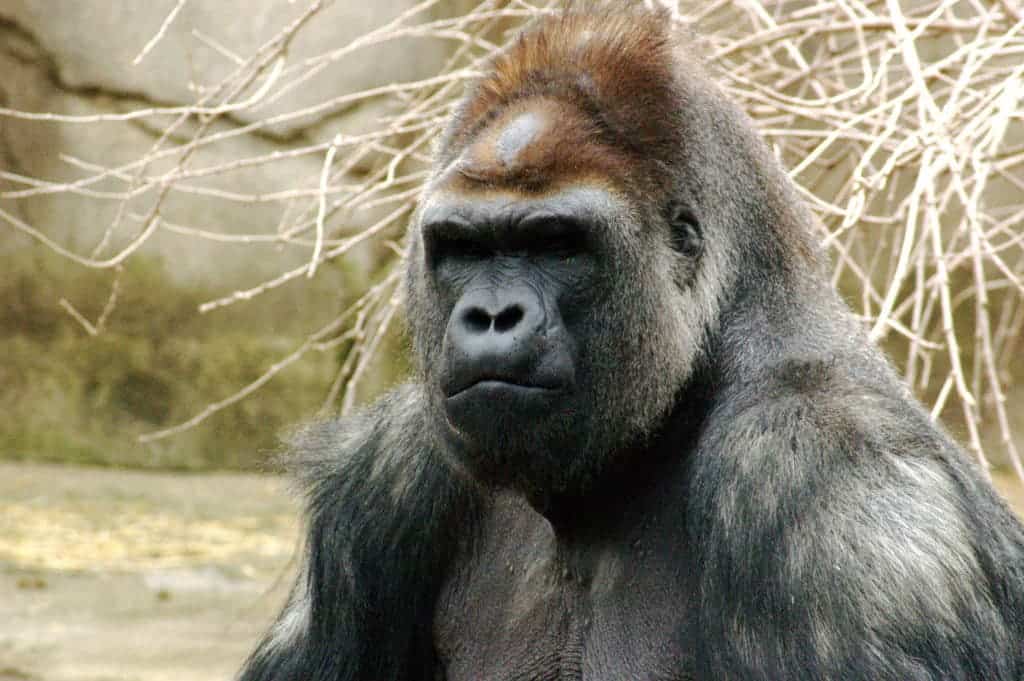While the situation of pandas is improving, the same can’t be said about great apes. According to the International Union for Conservation of Nature, the governing body of protected species, four of the six species of great apes are Critically Endangered – only one step away from going extinct. The remaining two are also under considerable threat of extinction.

Yes, it’s us
The Eastern Gorilla (Gorilla beringei), the largest living primate, has moved from Endangered to Critically Endangered after it lost 70% of its population in just 20 years. Furthermore, Grauer’s Gorilla (G. b. graueri), one subspecies of Eastern Gorilla – has lost 77% of its population since 1994. This decline was brought forth by humans, especially through hunting. These are our closest related animal relatives, and we’re killing them.
“To see the Eastern gorilla – one of our closest cousins – slide towards extinction is truly distressing,” says Inger Andersen, IUCN Director General. “We live in a time of tremendous change and each IUCN Red List update makes us realize just how quickly the global extinction crisis is escalating. Conservation action does work and we have increasing evidence of it. It is our responsibility to enhance our efforts to turn the tide and protect the future of our planet.”
Killing and hunting great apes is illegal, but that doesn’t seem to stop poachers. In 2013, a new report showed that nearly 3,000 chimpanzees, gorillas, bonobos, and orangutans are illegally killed or stolen from the wild each year, though the real figure is likely higher. Pair that off with habitat reduction, and survival becomes almost impossible.
“We are driving our closest living relatives to extinction, which is sickening,” said Dr Muttulingam Sanjanyan, vice-president at Conservation International.
According to him, local populations could greatly benefit from keeping the apes alive, but if we can’t do that, future generations will only see great apes in history books.
In many places of the world, especially in the ones richest in biodiversity, habitats are being destroyed at alarming paces, and the habitats of great apes are no exception. For most mammals, habitat destruction is the biggest problem, and this likely won’t stop anytime in the near future.
“Illegal hunting and habitat loss are still major threats driving many mammal species towards extinction,” says Carlo Rondinini, Coordinator of the mammal assessment at Sapienza University of Rome.
Many biologists believe we, as a society, are causing the planet’s sixth major extinction. An analysis conducted by Nature found that 41% of all amphibians on the planet now face extinction while 26% of mammal species and 13% of birds are similarly threatened. The IUCN Red List now includes 82,954 species of which 23,928 are threatened with extinction.


